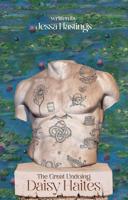Publisher's Synopsis
A secret plot that threatens to undermine the Catholic Church in mid-fifteenth century England; a hidden relic brought back from crusade; a lost painting once in the private collection of King Richard II: It is the year 1452, the reign of King Henry VI, and England is on the brink of civil war after the political and financial failures of the Hundred Years War with France. Amidst a period of uncertainty and conspiracy, The Templar's Garden tells a beautifully crafted narrative of faith, love, and grace.
Set against the political turmoil and ongoing war, there is a plot developing among members of the nobility that threatens to bring an end to Catholicism throughout the realm. This group of noblemen, headed by Edmund, Duke of Somerset, wishes to separate from the Pope in Rome and create a new church, the Church of England, to be controlled by the English King. The division is most stridently sought by those who oppose the weak and heirless Henry VI. However, they must first establish their credibility among the populace, a task that could be made all the easier if they were to possess a sacred artefact from the time of Christ's death. They believe such a holy relic remains in the possession of the Knights Templar, though its exact location is unknown. If they were to possess it they would effectively destroy both the House of Lancaster and the Roman Catholic Church in fifteenth century England.
The Templar's Garden recounts the story of young mystic Lady Isabelle d'Albret Courteault as her family is forced to flee the Duchy of English Gascony for a new and unforeseeable life in England. She discovers dark secrets about her family's chaplain and tutor, secrets that continue to haunt her as her family becomes established as courtiers in King Henry VI's court.
As part of her lessons while staying with the Benedictines at the Collegiate Church of St Peter in London, Lady Isabelle and her brothers and sisters are instructed in plainchant. The chant they study, a Tractus called Sicut cervus desiderat, by Johannes Ockeghem, is later sung by the monks in the vesper service at the abbey church. After hearing the sacred words of scripture expressed in the form of chant during the evening service, the Psalm is planted deep into the recesses of her memory. The poetic words provide comfort throughout the story as Lady Isabelle suffers from, and is witness to, various violent acts against her.
Commanded by the voice of God who comes to her in visions, and devoted to helping her friend and chaplain, Lady Isabelle remains steadfast in her promise to not share the secrets he entrusts in her. Their journey takes them to the New College of St Mary in Oxford where her chaplain was once a student and ends with a pilgrimage to St Davids in Pembrokeshire, retracing the path taken over two centuries earlier by Geraldus Cambrensis, or Gerald of Wales. Over time, a deep and loving friendship develops between her and her chaplain, one that is forbidden by his priestly vocation, yet it sustains them both as together they face mounting dangers of life in England during a period of great uncertainty, both for the future of the monarchy they serve and the faith they observe.
Reviews:
I sat quietly in a chair, opened Catherine Clover’s novel The Templar’s Garden, and after two sentences left our times unseen and emerged in the 15th century of France then England. It was a most peculiar sensation; Clover’s world is so vivid, nuanced and historically well informed, and the narrative voice of her protagonist, Lady Isabelle d'Albret Courteault, uncannily authentic. Unusually, here is also a book where choral polyphony swirls and echoes through the pages, specifically Ockeghem’s sublime setting of Psalm 42. This is a great debut, and the reward is doubled if you pair the book with the Choir of New College, Oxford’s new CD release Like as the Hart. New College features in the pages of The Templar’s Garden and the college Choir has programmed a fabulous collection of choral works all centred on Psalm 42, a text so open to possibilities. Favourites including Howells and Handel join the Ockeghem, and two new first-rate commissions by Alexander L’Estrange and Antony Pitts. Singing doesn’t get much better than this! Both book and CD will remain with me like a cloth of gold.
Benedict Warren Assistant Producer, BBC Symphony Orchestra
“… I’ve just read a new novel by Catherine Clover called The Templar’s Garden, which comes with an accompanying CD, both having on their covers one of my favorite images, the white hart on the outer panel of the Wilton Diptych. I loved the novel, narrated in the first person by a medieval damsel called Lady Isabelle and set in the 1400s in castles and monasteries, and I’m addicted to the CD, sung by New College Choir, of settings of Like as the Hart through the ages, from Ockeghem, Tallis, Schütz and Buxtehude to newly commissioned ones by Pitts and L’Estrange. More CDs to accompany books, please. A walking guide of Germany, perhaps, with accompanying Back cantatas?”
Ysenda Maxtone Graham, author of Terms & Conditions: Life in Girls’ Boarding-Schools






















